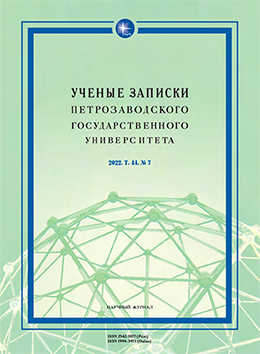«ГЛУХОЙ» И «ЗВОНКИЙ» КАРЕЛЬСКИЙ: ДИАЛЕКТНЫЕ МАРКЕРЫ НА КЛАСТЕРНЫХ КАРТАХ
“VOICED” AND “VOICELESS” KARELIAN LANGUAGE:
DIALECTAL MARKERS ON CLUSTER MAPS
Author(s): Irina Petrovna NovakSubject(s): Language and Literature Studies, Sociolinguistics, Finno-Ugrian studies, Eastern Slavic Languages
Published by: Петрозаводский государственный университет
Keywords: Karelian language; dialectology; linguistic geography; dialectometry; cluster analysis; consonantism; voiced and voiceless consonants;
Summary/Abstract: The phonetic opposition between voiced and voiceless consonants is found not in all Karelian dialects: this phenomenon does not exist in North Karelian subdialects of the Karelian Proper supradialect. This is why linguists consider this non-oppositional dialectal distinction as an essential marker of Karelian dialectal speech. However, the issues connected with the evolution of this phenomenon and identification of its specific isoglosses have remained unresolved. In this study, the author applied the dialectometric cluster analysis technique to dialectal sources in an attempt to identify the main phonetic positions influencing the distribution of voiced and voiceless consonants in Karelian sub-dialects of Russian Karelia and to trace the relevant isoglosses. As a result, the distribution ranges of the “voiced” and “voiceless” expressions of this phenomenon were outlined and a zone of transition between them was detected, although the grounds for distinguishing the special group of transitional dialects of the Karelian Proper supradialect could not be identified. Consonant sonorization probably appeared during the Old Karelian period, whereas the North Karelian voiceless consonants were a dialectal innovation caused by the influence of Finnish dialects. These results are to be used in the future when creating a linguistically grounded classification of Karelian dialects.
Journal: Ученые записки Петрозаводского государственного университета
- Issue Year: 44/2022
- Issue No: 7
- Page Range: 54-63
- Page Count: 10
- Language: Russian

